

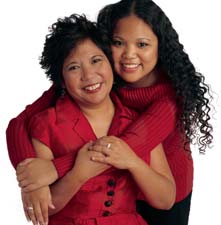


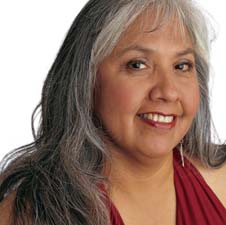
T H E H E A L T H Y
�ear�
H A N D B O O K F O R W O M E N
The National Heart, Lung, and Blood Institute (NHLBI) would like to express its gratitude to all of the women whose pictures and stories appear in this handbook.
They have shared their stories from the heart to help other women understand that heart disease is not just a statistic, but a disease that affects the lives of real women, of all ages and backgrounds, in every community in our country.
We are also pleased to announce that this edition of “The Healthy
Heart Handbook for Women” marks the 20th anniversary of this
publication. Since the first edition rolled off the presses in 1987,
this best-selling NHLBI book has reached hundreds of thousands of
women with a vital, empowering message: You can take action to
protect your heart health. As always, we hope that the stories of
courage and healing in these pages will continue to inspire readers
to act to protect their own health and well being. Thank you!

T H E H E A L T H Y
ear HANDBOOK FOR WOMEN

Mrs. Laura Bush, National Ambassador for The Heart Truth
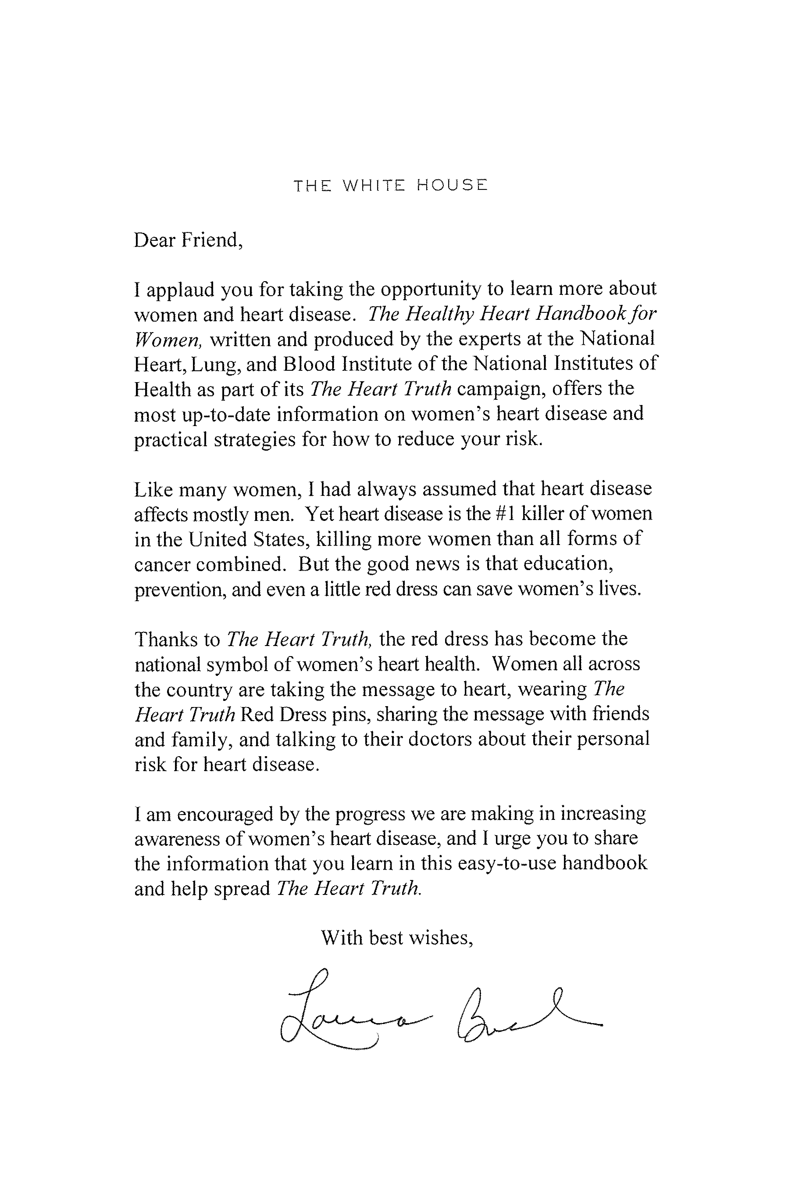
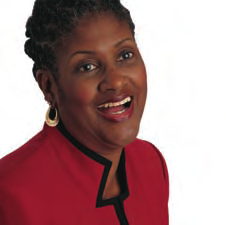

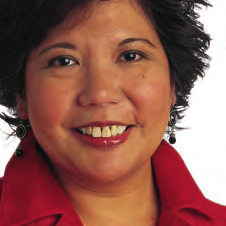
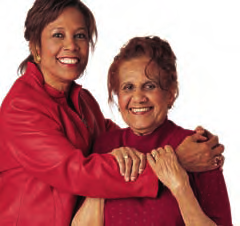
Written by: Marian Sandmaier
NIH Publication No. 07-2720
Originally printed 1987
Previously revised 1992, 1997, 2003, 2005
Revised March 2007

TA B L E O F con
ABOUT THIS NEW EDITION ————— en
—————————— s
————————————————— 7
THE HEART TRUTH —————————————————————————————————————— 8
GETTING THE WORD OUT ———————————————————————————————— 10
WHAT IS HEART DISEASE? ———————————————————————————————— 11
WOMEN AT RISK —————————————————————————————————————— 12
Every Risk Factor Counts ———————————————————————————————— 13
FINDING OUT YOUR RISK —————————————————————————————— 15
You and Your Doctor: A Heart Healthy Partnership —————————————— 15
MAJOR RISK FACTORS FOR HEART DISEASE ———————————————— 21
Smoking ———————————————————————————————————————————— 21
High Blood Pressure ———————————————————————————————————— 22
High Blood Cholesterol —————————————————————————————————— 29
Overweight and Obesity ———————————————————————————————— 38
Physical Inactivity —————————————————————————————————————— 42
Diabetes ———————————————————————————————————————————— 43
OTHER FACTORS THAT AFFECT HEART DISEASE —————————————— 49
Menopausal Hormone Therapy: What Every Woman Needs To Know ———— 49
Stress and Depression —————————————————————————————————— 52
Alcohol ———————————————————————————————————————————— 55
Birth Control Pills —————————————————————————————————————— 56
Sleep Apnea ———————————————————————————————————————— 58
TAKING CONTROL ———————————————————————————————————— 60
A FAMILY PLAN FOR HEART HEALTH —————————————————————— 61
AN ACTION PLAN FOR HEART HEALTH ———————————————————— 62
Eat for Health ———————————————————————————————————————— 63
Aim for a Healthy Weight ———————————————————————————————— 83
Learn New Moves ———————————————————————————————————— 94
You Can Stop Smoking ———————————————————————————————— 101
FOR WOMEN WHO HAVE HEART DISEASE ———————————————— 107
Screening Tests —————————————————————————————————————— 107
Medications ———————————————————————————————————————— 112
Special Procedures ———————————————————————————————————— 114
GETTING HELP FOR A HEART ATTACK ———————————————————— 115
Know the Warning Signs
—————————————————————————————— 115
Get Help Quickly ———————————————————————————————————— 116
Plan Ahead ———————————————————————————————————————— 117
THE HEART OF THE MATTER ———————————————————————————— 119
HOW TO ESTIMATE YOUR RISK
———————————————————————— 120
TO LEARN MORE ———————————————————————————————————— 121
— 5 —
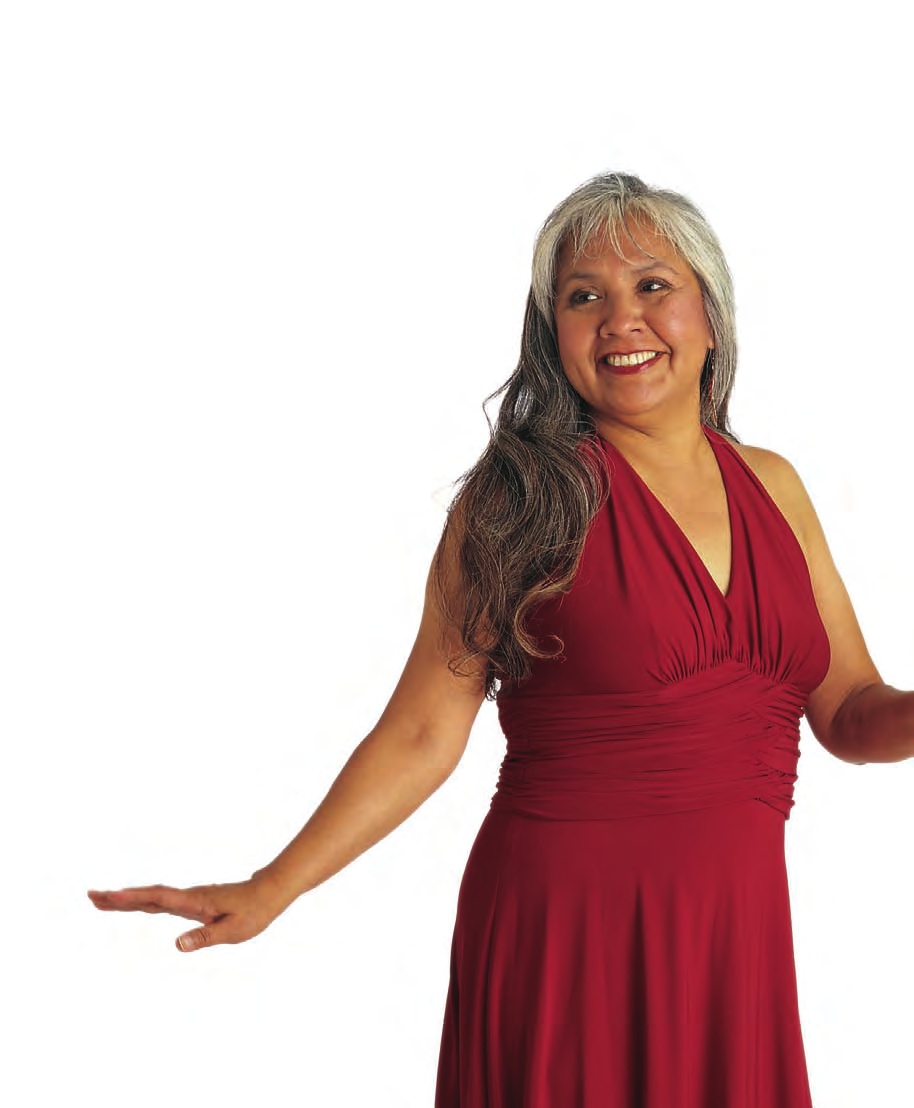
“ T H E H E A R T T R U T H M E A N S T A K I N G
C A R E O F Y O U R S E L F A N D Y O U R
H E A R T — I N S I D E A N D O U T . I T I S A
L O N G - T E R M C O M M I T M E N T A N D G O A L
T O L I V E A H E A L T H Y
L I F E , O N E T H A T I S
H A R M O N I O U S . ”
–Orlinda
— 6 —
abou THIS NEW EDITION
Research on women’s heart health is exploding. Nearly every
week, it seems, the media report on new ways to prevent and treat
heart disease in women—and it can be hard to keep track of it all.
In this updated edition of “The Healthy Heart Handbook for
Women,” we have put together all of this new knowledge in one
easy-to-use handbook. This guide is part of The Heart Truth, a
national public awareness campaign for women about heart
disease sponsored by the National Heart, Lung, and Blood Institute
(NHLBI) and many other groups. (See “Getting the Word Out” on
page 10.)
“The Healthy Heart Handbook for Women” will give you new
information on women’s heart disease and practical suggestions
for reducing your own personal risk of heart-related problems.
You’ll find out about a little-known form of heart disease in women
and how to get it diagnosed properly. The handbook will also
help you make sense of widely publicized research on the impact
of a lower fat diet on women’s heart disease risk.
There is much good news in these pages, including new findings that
people who avoid heart disease risk factors tend to live healthier and
longer lives. The handbook will give you the latest information on
preventing and controlling those risks. You’ll also find new tips on
following a nutritious eating plan, tailoring your physical activity program to your particular goals, and getting your whole family involved in heart healthy living. The handbook will also advise you on the warning signs
of heart attack, as well as how to act quickly to get help.
So welcome to “The Healthy Heart Handbook for Women”—your
one-stop source for the latest information on women’s heart disease
and heart health.
— 7 —
T H E
ear TRUTH
W hen you hear the term “heart disease,”
what is your first reaction? Like many women,
you may think, “That’s a man’s disease” or “Not my
problem.” But here is The Heart Truth: Heart disease is the #1
killer of women in the United States. Most women don’t know this.
But it is vital that you know it—and know what it means for you.
Some surprising facts:
■ One in 4 women in the United States dies of heart disease,
while 1 in 30 dies of breast cancer.
■ Twenty-three percent of women will die within 1 year after
having a heart attack.
■ Within 6 years of having a heart attack, about 46 percent of
women become disabled with heart failure. Two-thirds of
women who have a heart attack fail to make a full recovery.
The fact is, if you’ve got a heart, heart disease could be your
problem. Fortunately, it’s a problem you can do something
about. This handbook will help you find out your own risk of
heart disease and take steps to prevent and control it.
For women in midlife, taking action is particularly important.
Once a woman reaches menopause, her risks of heart disease
and heart attack jump dramatically. One in eight women
between the ages of 45 and 64 has some form of heart disease,
and this increases to one in four women over 65.
— 8 —
One in 4 women in the United States dies
of heart disease, while 1 in 30 dies of
breast cancer.
You still may be thinking, “But this isn’t about me. I don’t have
heart disease.” But you may have conditions or habits that can
lead to heart disease, such as being overweight, smoking
cigarettes, or not engaging in enough physical activity. You
may already know about these and other “risk factors” for heart
disease. You may know which ones you personally have.
What you may not know, though, is that if you have even one
risk factor, you are much more likely to develop heart disease,
with its many serious consequences. A damaged heart can
damage your life by interfering with enjoyable activities and
even your ability to do simple things, such as taking a walk
or climbing steps.
But now here’s the good news: You have tremendous power to
prevent heart disease—and you can start today. By learning
about your own personal risk factors and by making healthful
changes in your diet, physical activity, and other daily habits,
you can greatly reduce your risk of developing heart-related
problems. Even if you already have heart disease, you can take
steps to lessen its severity.
So use this handbook to learn more about heart healthy living.
Talk with your physician to get more answers. Start taking action
today to protect your heart. As one woman doctor put it, “Heart
disease is a ‘now’ problem. Later may be too late.”
— 9 —

G E T T I N G T H E worÑ OUT
Chances are, you’ve been seeing and hearing a lot of
information lately on women and heart disease. That’s
because an exciting public awareness campaign is
underway to help women protect their heart health. The
purpose of this nationwide campaign, called The Heart Truth,
is to spread the word that heart disease is a women’s issue.
The Heart Truth warns women about heart disease and
encourages them to take action against its risk factors.
The message is paired with an arresting image—the Red
Dress—the national symbol for women and heart disease
awareness. The symbol links a woman’s focus on her “outer self”
to the need to also focus on her “inner self,” especially her heart
health. The Red Dress is a visual “red alert” to convey the
message that “Heart Disease Doesn’t Care What You Wear—It’s
the #1 Killer of Women.”
The Heart Truth campaign is sponsored by the National Heart,
Lung, and Blood Institute in partnership with many national and
community health organizations around the country. So the next
time you come across a red dress, or a newspaper article or local
speaker on women and heart disease, take the time to get the
message. The Heart Truth: It could save your life.
For more information, visit the campaign’s Web pages at
www.hearttruth.gov.
— 10 —
W H AT I S
ear DISEASE?
Coronary heart disease—often simply called heart disease—
occurs when the arteries that supply blood to the heart muscle
become hardened and narrowed due to a buildup of plaque on
the arteries’ inner walls. Plaque is the accumulation of fat,
cholesterol, and other substances. As plaque continues to build
up in the arteries, blood flow to the heart is reduced.
Heart disease can lead to a heart attack. A heart attack
happens when an artery becomes totally blocked with plaque,
preventing vital oxygen and nutrients from getting to the heart.
A heart attack can cause permanent damage to the heart muscle.
Heart disease is one of several cardiovascular diseases, which
are diseases of the heart and blood vessel system. Other
cardiovascular diseases include stroke, high blood pressure,
and rheumatic heart disease.
One reason some women aren’t too concerned about heart
disease is that they think it can be “cured” with surgery. This is
a myth. Heart disease is a lifelong condition—once you get it,
you’ll always have it. True, procedures such as bypass surgery
and angioplasty can help blood and oxygen flow to the heart
more easily. But the arteries remain damaged, which means you
are more likely to have a heart attack.
What’s more, the condition of your blood vessels will steadily
worsen unless you make changes in your daily habits. Many
women die of complications from heart disease or become
permanently disabled. That’s why it is so vital to take action to
prevent and control this disease.
— 11 —
womenAT RISK
Risk factors are conditions or habits that make a person more
likely to develop a disease. They also can increase the chances
that an existing disease will get worse. Important risk factors for
heart disease that you can do something about are cigarette
smoking, high blood pressure, high blood cholesterol, overweight,
physical inactivity, and diabetes. Research shows that more than
95 percent of those who die from heart disease have at least
one of these major risk factors.
Some risk factors, such as age and family history of early heart
disease, can’t be changed. For women, age becomes a risk
factor at 55. Women who have gone through early menopause,
either naturally or because they have had a hysterectomy, are
twice as likely to develop heart disease as women of the same
age who have not yet gone through menopause. Another
reason for the increasing risk is that middle age is a time when
women tend to develop other risk factors for heart disease.
Family history of early heart disease is another risk factor that
can’t be changed. If your father or brother had a heart attack
before age 55, or if your mother or sister had one before age
65, you are more likely to get heart disease yourself.
While certain risk factors cannot be changed, it is important to
realize that you do have control over many others. Regardless
of your age, background, or health status, you can lower your
risk of heart disease—and it doesn’t have to be complicated.
Protecting your heart can be as simple as taking a brisk walk,
whipping up a good vegetable soup, or getting the support you
need to maintain a healthy weight.
— 12 —
Every Risk Factor Counts
Some women believe that doing just one healthy thing will take care
of all of their heart disease risk. For example, they may think that if
they walk or swim regularly, they can still smoke and stay fairly
healthy. Wrong! To protect your heart, it is vital to make changes
that address each risk factor you have. You can make the changes
gradually, one at a time. But making them is very important.
Other women may wonder, “If I have just one risk factor for heart
disease—say, I’m overweight or I have high blood cholesterol—
aren’t I more or less ‘safe’?” Absolutely not. Having just one risk
factor can double a woman’s chance of developing heart disease.
The “Multiplier Effect”
But having more than one risk factor is especially serious, because
risk factors tend to “gang up” and worsen each other’s effects.
Having two risk factors increases the chance of developing heart
disease fourfold. Having three or more risk factors increases the
chance more than tenfold.
The fact is, most women in midlife already have heart disease
risk factors. Thirty-three percent of women ages 40 to 60 have
one risk factor for heart disease that they can change. Another
31 percent of women in midlife have two modifiable risk factors,
while 17 percent have three or more modifiable risk factors.
Women of color have higher rates of some risk factors. More
than 85 percent of African American women in midlife are
overweight or obese, while 52 percent have high blood
pressure, and 14 percent have been diagnosed with diabetes.
Among Hispanic women in midlife, 78 percent are overweight
or obese, while more than 10 percent have been diagnosed
with diabetes.
The message is clear: Every woman needs to take her heart
disease risk seriously—and take action now to reduce that risk.
— 13 —
D I D you KNOW?
Many women think that breast cancer is a bigger threat than
heart disease. But the leading causes of death for American
women in the year 2004* were:
Heart Disease ______________________________________________________________________ 332,313
Cancer (all types) ________________________________________________________________ 265,022
■ Lung __________________________________________________________________________________ 67,838
■ Breast ________________________________________________________________________________ 40,539
■ Colorectal ________________________________________________________________________ 26,762
■ Pancreatic ________________________________________________________________________ 15,815
■ Ovarian ____________________________________________________________________________ 14,593
■ Uterine ________________________________________________________________________________ 6,906
■ Cervical ______________________________________________________________________________ 3,804
■ Others ______________________________________________________________________________ 88,765
Stroke ______________________________________________________________________________________ 91,487
Chronic Obstructive Pulmonary Disease ____________________________ 64,409
Alzheimer’s Disease ______________________________________________________________ 46,954
Accidents ________________________________________________________________________________ 38,903
Diabetes __________________________________________________________________________________ 37,771
Pneumonia/Influenza ____________________________________________________________ 33,902
* Most recent year for which data are available.
— 14 —
D I D you KNOW?
F I N D I N G O U T you� RISK
Many women think that breast cancer is a bigger threat than
heart disease. But the leading causes of death for American
women in the year 2004* were:
T he first step toward heart health is becoming
aware of your own personal risk for heart disease.
Some risks, such as smoking cigarettes, are
obvious: Every woman knows whether or not she smokes.
Heart Disease
332,313
But other risk factors, such as high blood pressure or high blood
Cancer (all types)
265,022
cholesterol, generally don’t have obvious signs or symptoms.
So you’ll need to gather some information to create your personal
■ Lung
67,838
“heart profile.”
■ Breast
40,539
■ Colorectal
26,762
You and Your Doctor: A Heart Healthy Partnership
■ Pancreatic
15,815
A crucial step in determining your risk is to see your doctor for a
■ Ovarian
14,593
thorough checkup. Your physician can be an important partner
■ Uterine
6,906
in helping you set and reach goals for heart health. But don’t
■ Cervical
3,804
wait for your doctor to mention heart disease or its risk factors.
■ Others
88,765
Many doctors don’t routinely bring up the subject with women
patients. Research shows that women are less likely than men
Stroke
91,487
to receive heart healthy recommendations from their doctors.
Chronic Obstructive Pulmonary Disease
64,409
Here are some tips for establishing good, clear communication
between you and your doctor:
Alzheimer’s Disease
46,954
Speak up. Tell your doctor you want to keep your heart
Accidents
38,903
healthy and would like help in achieving that goal. Ask
questions about your chances of developing heart disease and
Diabetes
37,771
how you can lower your risk. (See “Questions To Ask Your
Pneumonia/Influenza
33,902
Doctor” on page 17.) Also a



















